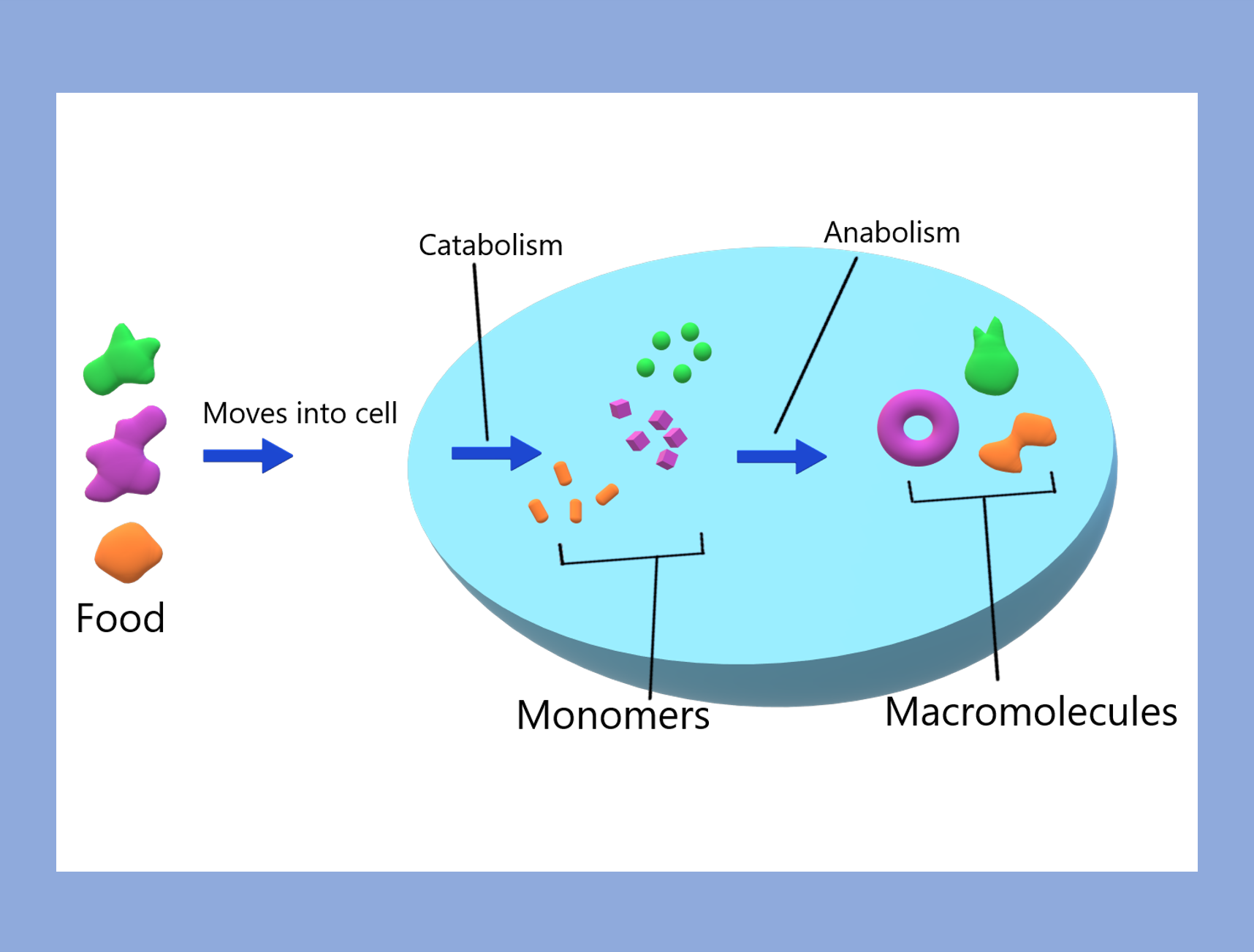Module 4: Biochemistry
Section outline
-

This module will describe the chemical behavior of carbon and its role in forming the four significant macromolecules that our bodies need. The reactions needed to form these molecules and break them down will also be illustrated. In addition, the individual properties of common functional groups will be explored concerning these carbon-based molecules. Finally, the roles of carbohydrates, proteins, lipids, and nucleic acids in our bodies and their importance in maintaining homeostasis will be evaluated.
("Anabolism and Catabolism" by Christinelmiller is used with a CC BY-SA 4.0 license.)
Upon completion of this module, you will be able to:- Describe the atomic
structure of carbon and relate how this structure allows for such versatility
in our bodies. (CLO #1)
- Explain how
macromolecules are made in the human body, and how they are broken down to be
used within our cells. (CLO #1)
- Relate the function of lipids and carbohydrates in our cells and explain how our bodies use them differently to store energy. (CLO #2 and #3)
- Describe proteins and emphasize the importance of the four levels of protein structure as they apply to protein function. (CLO #1 and #2)
- Describe the structure
of nucleic acids and summarize their role in information storage within the
human body. (CLO #4)
To achieve these objectives:
- Read the Module 4 Introduction. (C.L.O. #1, #3, and #4)
- Read Chapter 5 in the textbook. (C.L.O. #1, #3, and #4)
- Test Your Knowledge sections are located at the end of each segment in the chapter. Answering the questions in these sections will aid in your knowledge to help you with the course. These questions will be relevant for information on testing and quizzes. (C.L.O. #1, #3, and #4)(M.L.O. #1, #2, #3, #4, #5)
- Complete the exercises in the "Practice" section at the end of the chapter. (C.L.O. #1, #3, and #4)(M.L.O. #1, #2, #3, #4, #5)
- Complete the discussion activity. (C.L.O. #4)(M.L.O. #2, #3)
- Complete the case study exercise. (C.L.O. #4)(M.L.O. #4)
- Complete the quiz. (C.L.O. #1, #3, and #4)(M.L.O. #1, #2, #3, #4, #5)
Module Pressbooks Resources and Activities
You will find the following resources and activities in this module at the Pressbooks website. Click on the links below to access or complete each item.
-
Read chapter, review the "Test Your Knowledge" questions, and complete the activities in the "Practice" section at the end of the chapter.
- Describe the atomic
structure of carbon and relate how this structure allows for such versatility
in our bodies. (CLO #1)
Background Colour
Font Face
Font Kerning
Font Size
Image Visibility
Letter Spacing
Line Height
Link Highlight
Text Colour
